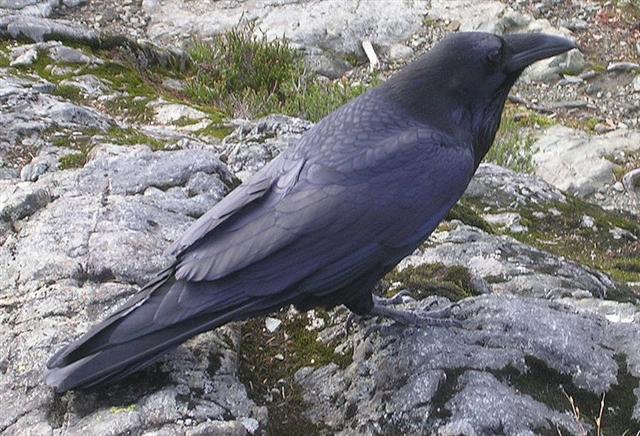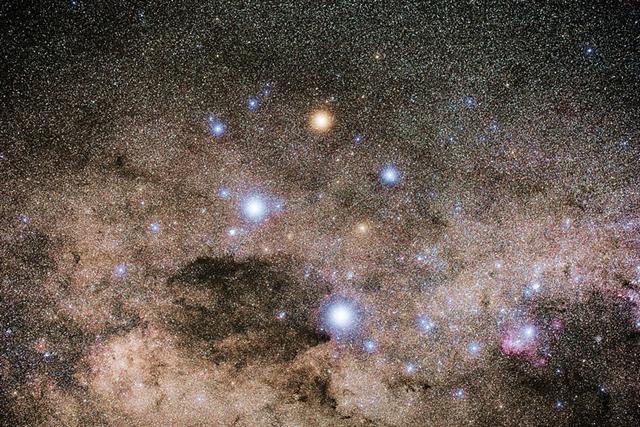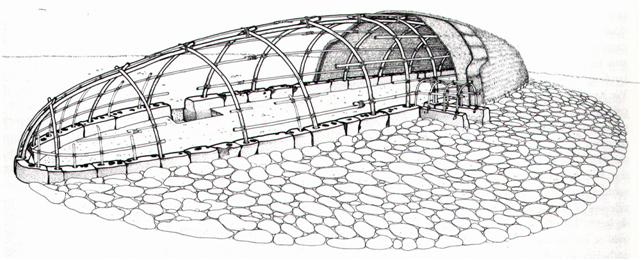In rongorongo times the March equinox coincided with the Sun at ε Phoenicis and 5 days later the Sun was at Ankaa (together with κ Phoenicis). I guess 'the door' where the heart and the entrails of Ulu were buried could refer to the 'door' of the current spring equinox, appropriately ruled by the Phoenix fire bird visible late in September up above in the southern hemisphere.
The 'spring of running water', near which the head of Ulu was buried, would then not be the Milky Way but the Eridanus river, lifting the newborn baby year upwards as if by a hydram towards the left foot of Orion:
South of the equator, however, the flow of the river could be regarded as running downwards due to the force of gravity, leaving a little gap to be jumped over from β Eridani (Cursa) to β Orionis (Rigel):

The 'door' in the C text, on the other hand, could be where a glyph 'is missing', where there is a 'gap' at heliacal ε Phoenicis, when Alchita at the beak of Raven was close to the Full Moon:

| March 21 |
22 (81) |
23 |
| September 20 |
21 |
equinox (265) |
| no glyph |
 |
 |
| Ca1-1 |
Ca1-2 |
| koia |
ki te hoea |
 |
 |
 |
| Cb14-11 (732) |
Cb14-12 |
Cb14-13 |
| ku kikiu |
tagata |
kua to i te heke |
| Al Fargh al Thāni-25 |
Uttara Bhādrapadā-27 / Wall-14 |
χ Pegasi (2.1), θ Andromedae (2.7) |
| 0h (365.25) |
| Caph, SIRRAH (0.5), ε Phoenicis (0.8) |
ALGENIB PEGASI (1.8) |
| 12h (182.6) |
Pálida (184.6), Megrez (184.9) |
Hasta-13 / Chariot-28 |
| Alchita, Ma Wei (183.1), Minkar (183.7), ρ Centauri (183.9) |
GIENAH (185.1), ε Muscae (185.2), ζ Crucis (185.4), Zaniah (185.9) |
| March 24 |
25 (84) |
26 |
| September 23 |
24 |
25 (268) |
 |
 |
 |
| Ca1-3 |
Ca1-4 |
Ca1-5 |
| ki te henua |
te rima te hau tea |
haga i te mea ke |
 |
 |
 |
| Cb14-14 |
Cb14-15 (736) |
Cb14-16 |
| tagata tui i tona ika |
manu puoko erua |
te manu - e noi koe te manu |
| ζ Tucanae (3.5), π Tucanae (3.7) |
no star listed |
Ankaa, κ Phoenicis (5.0) |
| Chang Sha (186.3) |
Intrometida (187.4), Acrux (187.5) |
γ Com. Berenicis (188.0), σ Centauri (188.1), Algorab (188.5), Gacrux (188.7)
|
| March 27 |
28 |
29 (88) |
| September 26 |
27 (270) |
28 |
 |
 |
 |
| Ca1-6 |
Ca1-7 |
Ca1-8 |
| ki te henua - tagata honui |
te ika |
te honu |
 |
 |
 |
| Cb14-17 |
Cb14-18 |
Cb14-19 (740) |
| kokoti hia te henua |
tagata hakaitiiti |
i te henua |
| λ Phoenicis (6.3), β Tucanae (6.4) |
no star listed |
DELTA (8.4), Schedir (8.6), μ Phoenicis (8.9) |
| γ Muscae (189.0), Avis Satyra (189.3), Asterion (189.5), Kraz (189.7) |
α Muscae (190.2), τ Centauri (190.5), χ Virginis (190.7) |
Al Áwwā'-11 |
| ρ Virginis (191.4), PORRIMA, γ Centauri (191.5) |
To make this 'door' more easily detected the creator of the C text may have formed the pair of glyph sequences in parallel (8 days long and stretching to Delta).
March 29 can be read as 3-29 which should make the reader think of heliacal Antares at the 'door' to the southern summer (in day 329 counted from January 1).
The hare paega entrance would also be an obvious parallel, with its doorway in the mornings leading out into the bright sunshine (or in the evenings for swallowing the tired old people):
Acrux is the southernmost star in the Southern Cross, by the Hawaiians named Newe:
... The first line is drawn from Hoku-paa, the fixed or North Star, to the most southerly star of Newe, the Southern Cross. (This hour circle coincides with the meridian on an evening in June, when it would divide the visible sky into halves.) The portion (of the sky) to the right or east of this line (the observer is evidently assumed to be facing north) is called ke ala ula a Kane, the dawning or bright road of Kane, and that to the left or west is called ke alanui maawe ula a Kanaloa, the much-traveled highway of Kanaloa. (Kane and Kanaloa were important gods in the Polynesian pantheon, Kane being associated with light, Kanaloa with darkness.) ...
| Vere 1. Beard, moustache (vede G); vere gutu, moustache; verevere, shaggy, hairy, tow, oakum. Mgv.: veri, bristly, shaggy, chafed (of a cord long in use). Mq.: veevee, tentacles. Ta.: verevere, eyelash. 2. To weed (ka-veri-mai, pick, cut-grass T); verevere, to weed. P Mgv.: vere, to weed. Mq.: veéveé, vavee, id. 3. Verega, fruitful, valuable; verega kore, unfruitful, valueless, contemptible, vain, futile, frivolous; tae verega, insignificant, valueless; mataku verega kore, scruple. Mgv.: verega, a design put into execution; one who is apte, useful, having a knowledge how to do things. 4. Ta.: verevere, pudenda muliebria. Ma.: werewere, id. (labia minora). Churchill.
Sa.: apungaleveleve, apongaleveleve, a spider, a web. To.: kaleveleve, a large spider. Fu.: kaleveleve, a spider, a web. Niuē: kaleveleve, a cobweb. Nukuoro: halaneveneve, a spider. Uvea: kaleveleve, a spider. Mgv.: pungaverevere, a spider. Pau.: pungaverevere, cloth. Mg.: pungaverevere, a cobweb. Ta.: puaverevere, id. Mao.: pungawerewere, puawerewere, puwerewere, a spider. Ha.: punawelewele, a spider, a web. Mq.: pukaveevee, punaveevee, id. Vi.: lawa, a fishing net; viritālawalawa, a cobweb; butalawalawa, a spider. Churchill 2. |
When Acrux was close to the Full Moon (in September 24) it may have meant - for an observer on Easter Island - that the old Sun year was 'finished'. In the coming morning the leading star of the Phoenix would rise with the Sun.
| March 25 (84) |
26 |
| September 24 |
25 (268) |
 |
 |
| Ca1-4 |
Ca1-5 |
| te rima te hau tea |
haga i te mea ke |
 |
 |
| Cb14-15 (736) |
Cb14-16 |
| manu puoko erua |
te manu - e noi koe te manu |
| no star listed |
Ankaa, κ Phoenicis (5.0) |
| Intrometida (187.4), Acrux (187.5) |
γ Com. Berenicis (188.0), σ Centauri (188.1), Algorab (188.5), Gacrux (188.7) |
The old sagging Sun could be hanging by a thread in Ca1-4. In Ca1-5 the Sun could have been covered up (puo) as by a blanket. At Cb14-15 Acrux returned to the Full Moon and only 4 days then remained to the end of side b.
I think the Hawaiians were not literally meaning a straight line from Polaris (Hoku-paa) to Acrux (Newe), because these stars were not close to each other in right ascension time:
| Polaris (26.6) |
160.9 |
Acrux (187.5) |
| April 16 (106) |
160 |
September 24 (267) |
| 23 weeks |
A better advice would have been to draw a line straight north from Acrux, exactly 187.5 - 5.0 = 182.5 = 365 / 2 days after Ankaa and κ Phoenicis.
Alternatively - for a viewer north of the equator - to draw a line straight south from Polaris down to Sheratan, which rose practically simultaneously:
| April 14 |
15 |
16 |
17 (107) |
18 |
| October 14 |
15 |
16 |
17 (290) |
18 |
 |
 |
 |
 |
 |
| Gb7-22 |
Gb7-23 |
Gb7-24 (435) |
Gb7-25 (*27) |
Gb7-26 |
| no stars listed |
POLARIS, Baten Kaitos (26.6), Metallah (26.9) |
Al Sharatain-1 / Ashvini-1 / Bond-16 |
ι Arietis (28.0), λ Arietis (28.2) |
| Segin, Mesarthim, ψ Phoenicis (27.2), SHERATAN, φ Phoenicis (27.4) |
| no star listed |
τ Bootis (208.2), Benetnash (208.5), ν Centauri (208.7), μ Centauri, υ Bootis (208.8) |
no star listed |
Muphrid (210.1), ζ Centauri (210.3) |
φ Centauri (211.0), υ¹ Centauri (211.1), υ² Centauri (211.8), τ Virginis (211.9) |
Possibly the 'blanket' (puo in Ca1-5) was inspired by the Coalsack nebula (the Black Magellanic Cloud) just beyond Acrux:

|


















